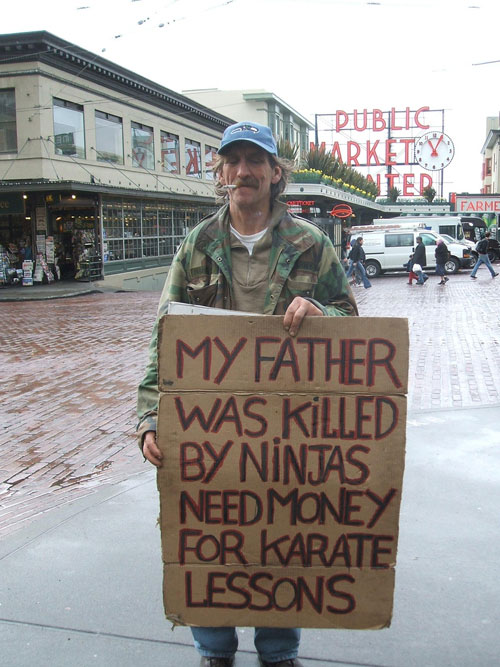Today I had a chance to discuss "Superfoot" technique with Terry Dow (President of Superfoot Systems) in the Martial Arts Journey online facebook group.
I was very surprised on how much we agreed on:
- Kyokushin, TKD and Okinawan Karate back when Wallace learned Karate were not nearly as different as they are today (they were all much more like Kyokushin is now... leg kicks and sweeps were common.)
- The lead leg kicks to really watch out for with a long stance fighter are the side kicks and hook kicks, these sport "fighters" today chambering on one foot and throwing lots of snappy round house kicks aren't going to get the same results in full contact competition that Wallace got with his hook kicks and side kicks.
- Full contact sparring in combat sports will give you the confidence you need to handle yourself on the street.
- He agreed that Wallace suffered the loss of a testicle from a kick to the groing when doing Kumite Point Fighting.
- He also bemoaned the state of modern TKD.
- Wallace's Superfoot technique was NOT a traditional Karate technique found in any Kata.
- Wallace was the Floyd Mayweather of American (so-called) Kickboxing.
Our disagreements were enlightening:
- He was definitely of the school of thought that says "it's the person that makes the fighter, not the art." (I think 100 days of training in Muay Thai is more effective than training 1,000 days in TKD.)
- He definitely thought it was best to focus on "7 or 8 strikes" and perfect them, and to not get side tracked by "flashy take downs and submissions." (I am of the mind that generalists do better in MMA and in self defense than specialists do. He went so far as to suggest the reason why Superfoot technique is not dominant in MMA is because people waste too much time on other things.)
- I suggested Superfoot technique would have been more effective with people with a reach advantage, Terry didn't agree with that, apparently Wallace fought taller fighters that way.
- Something I had been way off on is that Superfoot technique was NOT developed for point fighting, but when Wallace had been training in full contact karate with leg kicks and sweeps. Wallace was left handed and got a right leg injury in Judo, so he trained just his left leg.
- Another thing I was off on was that Wallace was not a cocky show off. On the contrary, he is to this day highly reflective and aware of his blind spots. Wallace constantly strives to improve, and hasn't ever been content with his performance as far as anyone knows.
The most enlightening part of the conversation though was when I really pushed him on Lawrence Kenshin's "Three Fights that Changed the World" video, and what Wallace's thoughts were about most kickboxing globally converting over to Japanese and Thai Kickboxing instead of American (so-called) Kickboxing. His main response was this recent interview between Benny the Jet and Wallace:
Wow... so in the first 5 minutes we see that:
- When Benny the Jet first saw Wallace fight, he immediately accused him of foot-fencing.
- Wallace saw his style as a necessary adaptation because he had a bad leg.
- Wallace was going for speed instead of power.
- Wallace's game plan was to use kicks to win by points, keeping opponents away with a powerful lead hook.
- Wallace admired the superior power of Benny the Jet's technique.
- They both think that today's Kumite Point Fighting is a no-contact mess, a disreputable martial art practice!
Look, I am still a major hater of Superfoot kicking technique. But this does go to show that if you spar with almost anything, you can develop actionable martial art skill with it. Even I wouldn't want to be stuck out at range getting picked apart by Terry Dow's hook kicks or side kicks.
But before you grab your kumite point fighting trophy and triumphantly declare yourself combat ready, keep a few things in mind here. You probably don't have a bad leg like Wallace did, so what is your excuse? Wallace relied heavily on hook kicks and side kicks, so why do you keep snapping out the world's crappiest round house kicks in Wallace's and Bruce Lee's name? Are you training with an American (so-called) Kickboxing instructor that actually knows how to do this, or are just thinking that if you break a few more boards your kicking power will be strong enough for your kicks to work in a fight? Are you the same caliber of athlete as Bill Wallace?


